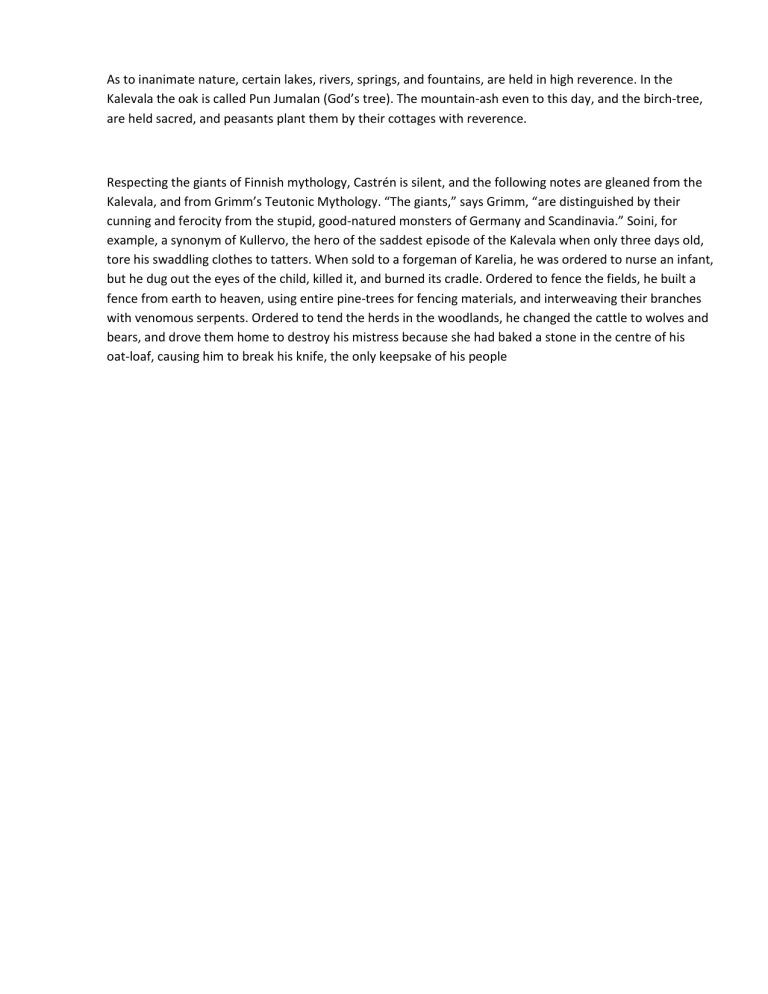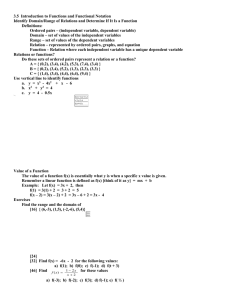
As to inanimate nature, certain lakes, rivers, springs, and fountains, are held in high reverence. In the Kalevala the oak is called Pun Jumalan (God’s tree). The mountain-ash even to this day, and the birch-tree, are held sacred, and peasants plant them by their cottages with reverence. Respecting the giants of Finnish mythology, Castrén is silent, and the following notes are gleaned from the Kalevala, and from Grimm’s Teutonic Mythology. “The giants,” says Grimm, “are distinguished by their cunning and ferocity from the stupid, good-natured monsters of Germany and Scandinavia.” Soini, for example, a synonym of Kullervo, the hero of the saddest episode of the Kalevala when only three days old, tore his swaddling clothes to tatters. When sold to a forgeman of Karelia, he was ordered to nurse an infant, but he dug out the eyes of the child, killed it, and burned its cradle. Ordered to fence the fields, he built a fence from earth to heaven, using entire pine-trees for fencing materials, and interweaving their branches with venomous serpents. Ordered to tend the herds in the woodlands, he changed the cattle to wolves and bears, and drove them home to destroy his mistress because she had baked a stone in the centre of his oat-loaf, causing him to break his knife, the only keepsake of his people



